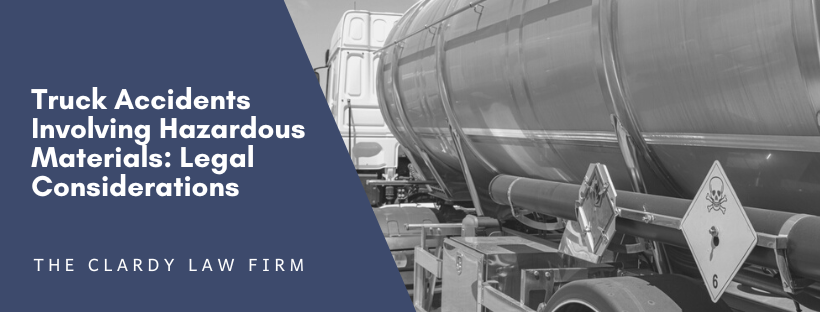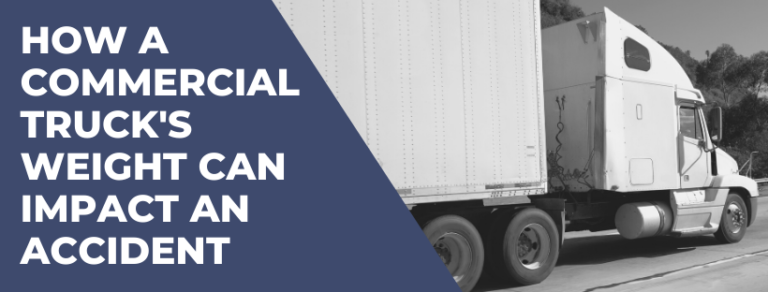Truck accidents involving hazardous materials have become concerning in the United States and worldwide. These incidents, often called hazardous material (HAZMAT) incidents, pose significant risks to public safety, property, and the environment. According to statistics, HAZMAT trucks are involved in thousands of accidents each year — some of which have devastating consequences.
According to Department of Transportation statistics, 200 of the 5,000 fatal truck accidents that occur annually in the United States involve HAZMAT carriers. Each day, more than 800,000 shipments of hazardous materials inside trucks, such as gasoline or flammable gas. The potential for human injury and property damage is much greater when dealing with accidents of this caliber. The possible long-standing effects and extensive site cleanup can be much greater than in non-HAZMAT vehicle crashes.
The transportation of hazardous materials is essential to many industries, including manufacturing, chemicals, and healthcare. It ensures that crucial supplies and products reach their intended destinations. However, the inherent risks of transporting hazardous materials, such as flammable liquids, toxic gases, or radioactive materials, make addressing the legal considerations surrounding these operations imperative.
The Potential Consequences of Such Accidents
Truck accidents involving hazardous materials have the potential to result in catastrophic outcomes. Unlike regular traffic accidents, HAZMAT incidents can escalate quickly, leading to:
- Serious injuries and fatalities: These accidents can cause severe injuries to truck drivers, passengers, and individuals in nearby vehicles. In the worst-case scenarios, they can result in fatalities.
- Environmental contamination: Spills or leaks of hazardous materials can contaminate soil, water bodies, and the air, leading to long-term environmental damage.
- Property damage: HAZMAT accidents can cause significant damage to vehicles, infrastructure, and nearby properties.
- Evacuations and disruptions: Depending on the accident’s severity, local authorities may need to evacuate residents and businesses, leading to disruptions and economic losses.
- Legal and financial consequences: The legal fallout from HAZMAT accidents can be complex, resulting in lawsuits, fines, and penalties for the parties involved.
The Importance of Understanding Legal Considerations
Given the multifaceted nature of truck accidents involving hazardous materials and their far-reaching consequences, individuals, trucking companies, legal professionals, and the general public must understand these incidents’ legal considerations. This knowledge empowers stakeholders to navigate the complexities of HAZMAT regulations, liability issues, and compensation claims effectively.
Understanding Hazardous Materials
To delve into the legal considerations surrounding truck accidents involving hazardous materials, it is essential to establish a clear understanding of what constitutes hazardous materials. HAZMAT encompasses a wide range of substances that can pose risks to human health, safety, and the environment when not handled or transported correctly.
Hazardous materials are typically categorized into classes or divisions, each representing specific types of hazards. These categories include:
- Explosives (Class 1): This class covers materials that can detonate or explode under certain conditions, such as dynamite or fireworks.
- Gases (Class 2): Gases are further divided into flammable gases (e.g., propane), non-flammable gases (e.g., nitrogen), and toxic gases (e.g., chlorine).
- Flammable Liquids (Class 3): Substances in this category can ignite and burn easily, such as gasoline, alcohol, or diesel fuel.
- Flammable Solids (Class 4): Flammable solids include materials that can combust when exposed to heat or friction, like matches or certain chemicals.
- Oxidizers and Organic Peroxides (Class 5): These materials can promote combustion in other substances and are often used in manufacturing and chemical processes.
- Toxic Substances (Class 6): Toxic materials are harmful when inhaled, ingested, or come into contact with the skin. Examples include pesticides and certain industrial chemicals.
- Radioactive Materials (Class 7): Radioactive substances emit ionizing radiation, posing significant health risks if not handled properly.
- Corrosive Materials (Class 8): Corrosive substances can cause severe damage to living tissue and materials. Examples include strong acids and alkalis.
- Miscellaneous Hazardous Materials (Class 9): This category includes materials that don’t fit into the other classes but still pose risks. Examples include asbestos and environmentally hazardous substances.
Common Types of Hazardous Materials Transported by Trucks
Trucks haul many hazardous materials daily that are crucial to many industries. Some common examples include:
- Chemicals: Hazardous chemicals like acids, solvents, and industrial cleaning agents are transported for manufacturing and industrial applications.
- Petroleum Products: Gasoline, diesel fuel, and other petroleum-based products are hazardous materials frequently transported by tank trucks.
- Explosives: The transportation of explosives is necessary for the construction, mining, and demolition industries.
- Medical and Pharmaceutical Products: Some pharmaceuticals and medical supplies, such as radioactive isotopes and certain pharmaceutical chemicals, are considered hazardous materials.
- Radioactive Materials: Radioactive materials are used in medical and scientific research and are transported under strict regulations.
- Toxic Gases: Chlorine and ammonia are used in various industrial processes and transported in specialized containers.
Regulatory Framework
Safely transporting hazardous materials via trucks is heavily regulated by federal agencies in the United States. These regulations aim to minimize risks, protect public safety, and mitigate environmental hazards. Understanding the key components of this regulatory framework is crucial when addressing legal considerations in truck accidents involving hazardous materials.
Hazardous Materials Transportation Act (HMTA): The HMTA is the primary federal law governing the transportation of HAZMAT in the United States. It grants authority to the Pipeline and Hazardous Materials Safety Administration (PHMSA) to establish and enforce regulations related to HAZMAT transportation.
Title 49 of the Code of Federal Regulations (49 CFR): Title 49 CFR contains comprehensive regulations dedicated explicitly to transporting hazardous materials. It covers various aspects, including classification, packaging, labeling, placarding, and emergency response procedures.
Hazardous Materials Regulations (HMR): The HMR, found in Title 49 CFR, establishes detailed requirements for the safe transportation of hazardous materials. These regulations address aspects such as proper packaging, labeling, and the qualifications of HAZMAT drivers.
HAZMAT registration: Trucking companies transporting hazardous materials must register with the PHMSA. This registration ensures that companies adhere to safety standards and maintain proper documentation.
South Carolina Regulations and Their Impact
In addition to federal regulations, individual states may impose rules and requirements for transporting hazardous materials. State regulations can vary, but they must be consistent with federal guidelines. Some states may have additional reporting, permitting, or licensing requirements that trucking companies must comply with.
Trucking companies and drivers must be aware of federal and state-specific regulations that apply to their operations. Failing to adhere to these regulations can result in legal consequences, including fines, penalties, and potential liability in the event of an accident.
In South Carolina, the transportation of hazardous materials is governed by several laws and regulations:
South Carolina Hazardous Waste Management Act
It is illegal for anyone to generate, store, transport, treat, or dispose of hazardous waste in the state without adhering to specified procedures.
Hazardous Waste Transporter Permit
South Carolina mandates that all individuals and entities transporting hazardous waste within the state must obtain a permit following the South Carolina Hazardous Waste Management regulations.
Regulation 61-79 Hazardous Waste Management
This regulation provides guidelines for issuing, modifying, revoking, and reissuing permits related to hazardous waste treatment, storage, and disposal facilities.
S.C. Code Regs. 61-79.273.D.52
Under the Department of Transportation regulations, materials are considered hazardous waste if they are subject to the Hazardous Waste Manifest.
Individuals and businesses should familiarize themselves with these regulations and obtain the necessary permits to ensure compliance with South Carolina’s hazardous material transportation laws. Violations can lead to legal consequences.
Compliance requirements for trucking companies and drivers
Compliance with hazardous materials transportation regulations is non-negotiable for trucking companies and drivers. Failure to comply can lead to serious legal and financial repercussions. Here are essential compliance requirements:
Driver training and certification: HAZMAT drivers must undergo specialized training and obtain certification to transport hazardous materials safely. This training covers proper handling, emergency response, and documentation.
Proper packaging and labeling: Hazardous materials must be packaged and labeled correctly to indicate their contents and potential risks. Failure to do so can result in regulatory violations.
Vehicle inspection and maintenance: Trucks transporting hazardous materials must be regularly inspected and well-maintained to comply with safety standards.
Emergency response plans: Trucking companies must have robust emergency response plans to address accidents or incidents involving hazardous materials. These plans must be regularly updated and communicated to all relevant personnel.
Documentation and record-keeping: Thorough and accurate documentation of hazardous materials shipments is crucial. This includes bills of lading, shipping papers, and manifests, which must be readily available for inspection.
Security measures: Given the potential for misuse or theft of hazardous materials, security measures must be in place to protect against unauthorized access and tampering.
Liability in Hazardous Material Truck Accidents
Truck accidents involving hazardous materials present unique legal challenges when determining liability. Establishing responsibility for these accidents is essential for ensuring that victims receive the compensation they deserve and that the responsible parties are held accountable.
Identifying Responsible Parties
Trucking companies: In many cases, the trucking company that owns and operates the vehicle transporting hazardous materials can be held liable. This includes ensuring that their drivers are properly trained, their vehicles are well-maintained, and they comply with all relevant regulations.
- Drivers: The truck driver’s actions can directly contribute to an accident. If a driver is found negligent, reckless, or violating safety regulations, they may be held personally liable for the accident and its consequences.
- Cargo loaders: Those responsible for loading and securing hazardous materials onto the truck can also be liable if improper loading or securing of cargo leads to an accident.
- Manufacturers: In some cases, if a defect in the truck or the hazardous materials packaging or containment contributed to the accident, the manufacturers of those components may be held liable.
- Shippers and consignors: The parties responsible for selecting the carrier and packaging and labeling the hazardous materials may also share liability if they fail to adhere to safety regulations.
Proving Negligence in Hazardous Material Accidents
Proving negligence is crucial to establishing liability in hazardous material truck accidents. Negligence can be defined as the failure to exercise reasonable care, resulting in harm to others. To prove negligence, the following elements typically need to be demonstrated:
- Duty of care: The responsible party had a duty of care towards others, which includes adhering to safety regulations governing the transportation of hazardous materials.
- Breach of duty: It must be shown that the responsible party breached their duty of care by failing to meet the required standards. This could involve inadequate training, improper cargo handling, or vehicle maintenance violations.
- Causation: There must be a clear link between the breach of duty and the accident or harm suffered. It must be established that the breach directly contributed to the accident.
- Damages: To file a successful claim, it’s necessary to demonstrate that actual damages or harm resulted from the accident. This can include injuries, property damage, environmental contamination, and economic losses.
Proving negligence in hazardous material truck accidents can be complex and requires thorough investigation, expert analysis, and legal knowledge. Victims or their legal representatives must gather evidence, interview witnesses, and work with experts to establish the elements of negligence.
Environmental Impact
Truck accidents involving hazardous materials have far-reaching consequences beyond the immediate safety and legal concerns. One significant aspect of these incidents is their environmental impact.
Environmental Consequences of Hazardous Material Spills
Soil contamination: Hazardous material spills can contaminate soil, making it unfit for agriculture or other uses. Contaminated soil may require extensive remediation efforts.
Water pollution: Spills near water bodies or drainage systems can lead to water pollution. Hazardous materials can infiltrate rivers, lakes, and groundwater, posing risks to aquatic life and human health.
Air pollution: Some hazardous materials can release toxic gases or vapors into the air, affecting air quality and potentially endangering nearby communities.
Ecosystem damage: Releasing hazardous materials can harm local ecosystems, including plant and animal populations. These effects can be long-lasting and disrupt the natural balance.
Human health risks: Environmental contamination can pose health risks to nearby residents, workers, and emergency responders. Exposure to toxic substances can result in respiratory issues, skin conditions, and other health problems.
Legal Obligations for Cleanup and Remediation
The Clean Water Act (CWA) and the Comprehensive Environmental Response, Compensation, and Liability Act (CERCLA), commonly known as the Superfund law, are critical federal statutes that outline legal obligations for addressing environmental contamination caused by hazardous material spills.
Clean Water Act (CWA): The CWA primarily focuses on water pollution prevention and control. Under the CWA, responsible parties are required to report hazardous material spills immediately and take measures to mitigate environmental damage. They may also be liable for cleanup costs and fines for violations.
Comprehensive Environmental Response, Compensation, and Liability Act (CERCLA): CERCLA is designed to address hazardous waste sites and spills, including those involving hazardous materials from truck accidents. It establishes a process for identifying responsible parties and requires them to undertake cleanup and remediation efforts. CERCLA also empowers the government to recover costs associated with cleanup from responsible parties.
Potential Fines and Penalties for Environmental Violations
Fines and penalties for environmental violations resulting from hazardous material truck accidents can be substantial. These consequences are intended to deter unsafe practices and compensate for environmental cleanup and restoration costs. Violators may face:
Civil penalties: The Environmental Protection Agency (EPA) and other regulatory agencies can impose civil penalties on parties responsible for environmental violations. These penalties can range from thousands to millions of dollars, depending on the severity of the violation.
Criminal charges: In cases of intentional misconduct or severe negligence leading to environmental damage. Individuals or organizations found guilty may face fines, probation, or even imprisonment.
Cleanup costs: Responsible parties are typically responsible for the costs associated with environmental cleanup and restoration efforts. These costs can be substantial, especially in cases of extensive contamination.
Understanding the environmental impact of hazardous material truck accidents underscores the importance of adhering to safety regulations and conducting thorough risk assessments. Moreover, it highlights the need for prompt and effective response measures to minimize environmental damage.
Compensation for Victims
Truck accidents involving hazardous materials can have devastating consequences for individuals and communities. Victims of these accidents often face significant physical, emotional, and financial challenges.
Legal Options for Victims of Hazardous Material Truck Accidents
Personal injury claims: Victims who suffered injuries due to a hazardous truck accident may pursue personal injury claims against the responsible parties. These claims seek compensation for medical expenses, pain and suffering, lost wages, and other damages.
Wrongful death claims: In cases where a hazardous material truck accident results in a fatality, surviving family members may file wrongful death claims. These claims aim to compensate for funeral expenses, loss of financial support, and emotional suffering.
Product liability claims: If a defect in the truck or the packaging of hazardous materials contributed to the accident, victims may pursue product liability claims against the manufacturers or distributors of the faulty products.
Environmental damage claims: Individuals and communities affected by environmental contamination resulting from a hazardous material spill may seek compensation for the loss of property value, cleanup costs, and health-related expenses.
Pursuing Compensation for Damages
To pursue compensation successfully, victims of hazardous material truck accidents must take specific steps:
- Documenting the accident: Victims should gather evidence and documentation related to the accident, including photographs, police reports, witness statements, and medical records.
- Determining liability: Identifying the responsible parties and their level of liability is crucial. This may involve consulting with experts and legal professionals.
- Calculating damages: Victims should assess the full extent of their damages, including medical bills, property damage, lost income, and non-economic losses such as pain and suffering.
- Engaging legal representation: Seeking the knowledge of an experienced truck accident attorney is highly recommended. Legal professionals can navigate the complexities of the legal process and advocate on behalf of the victim’s interests.
The Role of Accident Attorneys
Accident attorneys are vital in helping victims of hazardous material truck accidents seek justice and compensation. Their responsibilities include:
- Case evaluation: Accident attorneys assess the merits of the case, determine liability, and estimate potential compensation.
- Legal representation: Attorneys represent victims during negotiations with insurance companies and in court, if necessary.
- Gathering evidence: Attorneys collect and organize evidence, interview witnesses, and consult with experts to build a strong case.
- Negotiating settlements: Attorneys work to secure fair settlements on behalf of their clients, striving to cover all damages and losses.
- Litigation: If a fair settlement cannot be reached, attorneys are prepared to take the case to court and advocate for their clients in a trial.
- Providing guidance: Attorneys guide clients through the legal process, helping them make informed decisions about their cases.
- Advocating for victims’ rights: Accident attorneys prioritize their clients’ best interests, fighting for their rights and seeking the maximum compensation.
Victims of hazardous material truck accidents have legal recourse to seek compensation for their losses and damages. Engaging the services of a qualified truck accident attorney is a crucial step in navigating the legal complexities of these cases and ensuring that victims receive the compensation they deserve.
If you or your loved one have been injured in an accident involving a truck carrying hazardous materials, contact The Clardy Law Firm for a free consultation. Our Greenville, South Carolina attorneys have spent more than 25 years fighting for the rights of individuals and families throughout the state.





